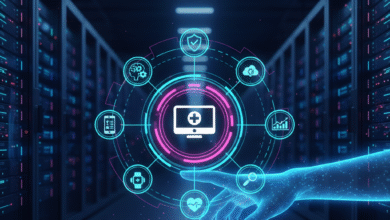Leading Through Crisis: Why Critical Incident During Critical Incidents Is No Longer an Option
Crisis can happen at any time in today's world, which moves quickly and is often hard to predict. This is true at work, in communities, and in people's personal lives.

Crisis can happen at any time in today’s world, which moves quickly and is often hard to predict. This is true at work, in communities, and in people’s personal lives. Psychiatric and emotional effects of traumatic events can be very strong and last a long time. This is why critical incident stress management (CISM) is so useful for leaders, businesses, and people who help others. CISM is no longer a choice; it’s now a must-do to protect people’s mental health and make sure organizations can handle crises.
Understanding Critical Incident Stress Management
Critical incident stress management is a structured way to help people and groups deal with the emotional effects of traumatic or high-stress events. These things can be natural disasters, accidents at work, violent acts, sudden deaths, or anything else that makes it hard to deal with things normally. CISM’s goal is to lessen the effects of stress and speed up recovery by intervening quickly and effectively.
CISM is different from traditional counseling because it focuses on providing immediate and short-term support to help people stay stable, stop long-term mental health issues from happening, and encourage healthy ways of coping. Defusing sessions, crisis counseling, and group debriefings led by trained professionals are just a few of the methods that are often used. People who take this proactive approach may be less likely to develop long-term mental health problems like PTSD, anxiety, and depression.
Why CISM Is Essential in Modern Leadership
You can’t say enough about how important it is for leaders to know how to handle critical incidents and stress. Leaders in all fields are facing problems that have never been seen before. For example, they have to handle crises caused by public health emergencies, violence at work, and sudden problems with operations. Critical incidents have effects on more than just the people who are directly affected. They can also have an effect on the morale, productivity, and safety of whole teams and organizations.
Leaders who think ahead know that dealing with the emotional effects of these kinds of events is just as important as dealing with the practical and operational effects. Leaders show they care about their employees’ mental health by including CISM in their crisis response plans. This builds trust, resilience, and a culture of care. This method also lowers absenteeism, burnout, and turnover, which is good for the organization’s long-term success.
Also, the shame surrounding mental health is slowly going away, which makes it easier for people to talk about their emotional problems at work. Critical incident stress management lets employees know that you care about their health and are there to help them when they need it most.
The Key Components of Effective Critical Incident Stress Management
For CISM to work, it needs a few key parts that are tailored to the type of incident and the needs of those affected:
- Pre-incident Education and Preparedness: Teaching leaders and staff about how people react to and deal with stress helps people get ready for possible crises and encourages early intervention.
- Immediate Defusing and Crisis Intervention: Defusing sessions help people talk about their feelings and calm down their acute stress reactions right after an incident, before they get worse.
- Debriefing on Critical Incident Stress: When held within 24 to 72 hours of the event, these structured group discussions give people who were affected a chance to talk about it with others, which can help them feel less alone and confused.
- Ongoing Follow-Up and Referral: Making sure that people get longer-term mental health support when they need it by keeping an eye on their progress and sending them to professional counseling is part of ongoing follow-up and referral.
Each step stresses timely, caring communication and tells people to notice and deal with stress symptoms as soon as possible. When these stages are fully implemented, organizations are better able to help their employees get through traumatic events.
Implementing CISM in Your Organization
Getting your organization to use critical incident stress management requires planning, training, and a long-term commitment. To get started, here are some useful steps:
- Create a crisis response plan: With clear steps that include CISM interventions as an important part of the response.
- Train teams to be CISMs: Find staff or outside professionals who can provide good CISM services and train them.
- Raise awareness: Teach all employees about the benefits of CISM and encourage them to be open about their mental health.
- Connect CISM to Employee Assistance Programs (EAP): Work together to make sure that support and referrals go smoothly.
- Evaluate and Change: Always look at how well your CISM program is working and make changes based on feedback and changing needs.
When businesses plan ahead for major incidents with an emphasis on emotional healing, they can shorten the time it takes for employees to recover and make them better prepared for future challenges.
The Broader Impact of Critical Incident Stress Management
CISM has benefits that go beyond the health of individuals and organizations. On a societal level, using effective stress management techniques by many people makes communities healthier and eases the strain on healthcare systems. Emergency workers, healthcare workers, and other frontline workers who are often exposed to traumatic situations need to be able to access CISM in order to keep doing their jobs well.
Having strong CISM frameworks in place is also important for keeping society stable and building up our collective resilience as crises happen more often and are more complicated, whether they are caused by climate change, pandemics, or social unrest.
Take the Next Step Toward Healing and Resilience
It is very important for your organization or community to have critical incident stress management as part of its crisis response plan if they want to handle crises with care and efficiency. Support, education, and acting quickly can make a huge difference in how well people and groups recover from trauma.
Visit https://www.supportmepsychotherapy.com/emotional-healing to find out more about how CISM can be changed to fit your needs. Learn about professional help and helpful tools that can help you build a strong, caring space where healing is possible and everyone’s health is valued.
Summary
Critical incident stress management is no longer an extra that you can do if you want to. It is now an important part of modern crisis leadership. Leaders can lessen the psychological effects of traumatic events, create a culture of care, and make their organizations more resilient by understanding how important it is and using structured, caring interventions. Not only what happens, but also how people heal afterward, is important for the future of crisis management.




